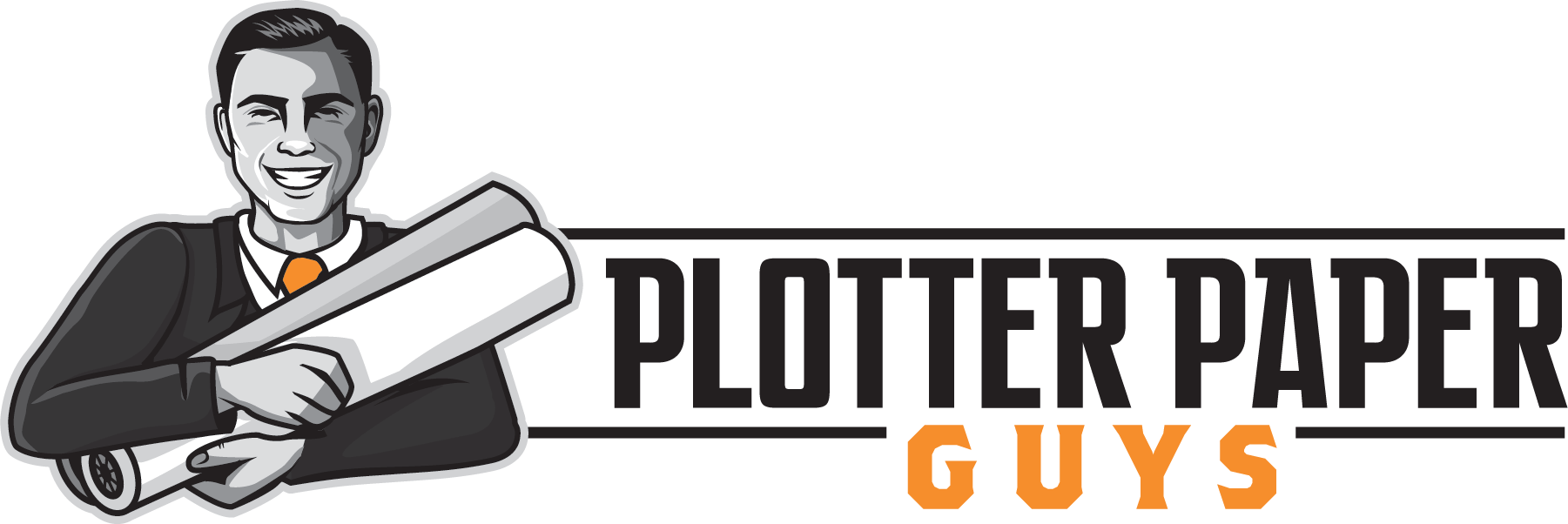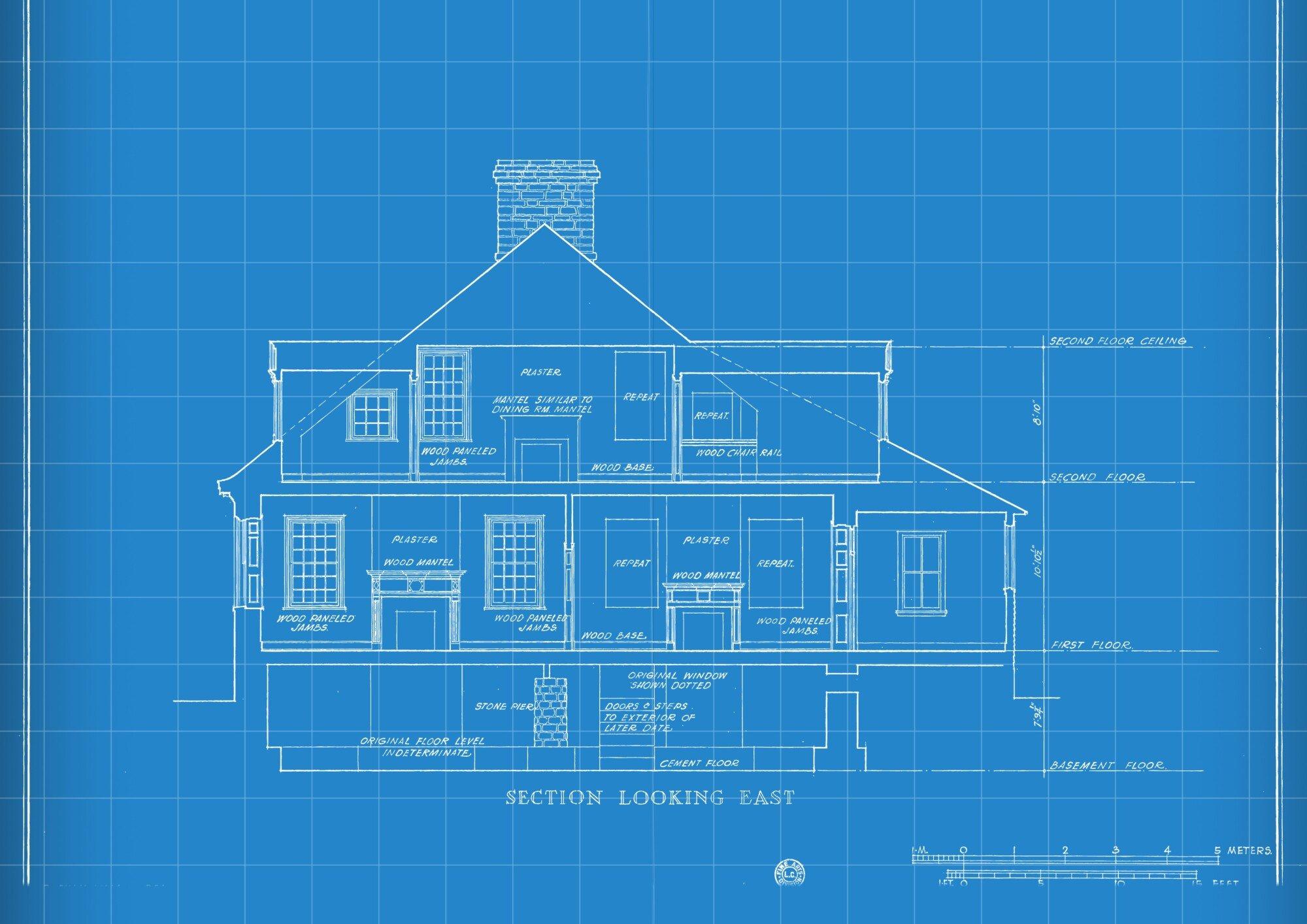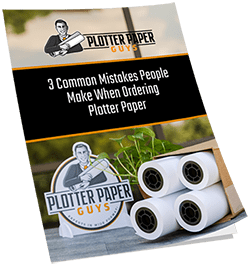Did you know that the original process of blueprinting was unable to produce color or any shades of grey? The process itself was characterized by lightly colored, almost white lines onto a blue background. Today, blueprint paper remains an important tool for any draftsman or architect. It Is the large-scale version of tracing paper, and it’s used to outline construction details onto a drafting table. We’re going to explain exactly what blueprint paper is, how to use blueprint paper, the benefits of it, and a lot more, so keep reading!
What Kind of Paper is Used for Blueprints?
Vellum plotter paper is the usual preference for blueprints, as it is archival. It’s a thicker option that creates high-quality blueprints. The quality is excellent for any kind of blueprint, especially the larger ones used in industrial settings where they may need to be reused many times over.
Vellum plotter paper comes with slightly higher costs, but it’s worth every cent when you consider how long each sheet lasts! In contrast, mylar papers are not as dense as vellum plotter papers which means they’re often cheaper yet still durable enough for most purposes, including making copies for home or office use. They also come available in either frosted (opaque) or transparent variations. They’re cheaper so provide a more economical option for blueprints. The quality is still good, but not quite as crisp or clear compared to vellum plotter papers.
What is Blueprint Bond Paper?
Bond paper is that type of paper that is slightly rough-surfaced and it’s pretty common. It’s usually used for writing, printing, or drawing, as well as blueprints. Regular blueprints and certain specs are best created if a 20# bond is used. A 20# is a high enough grade and it’s durable enough for almost any use. When you’re looking for a blueprint paper to do your drawings or reproductions, it’s best to select one that is specifically designed for blueprints.
Bond paper has a slightly rough surface that makes it less likely to cause smudging when wet ink is applied. Look for 24lb or heavier-weight paper to ensure the highest quality results.
Blueprint bond paper is available in both rolls and sheets. The most common roll widths are 24″ and 36″, while the sheet sizes range from 11″x17″ up to 30″x42″. Larger sheets can be difficult to handle while feeding into the printer, so it’s often best to choose a smaller size if you don’t need the extra space.
When selecting blueprint bond paper, there are a few factors you should consider: weight, surface texture, and size. Heavier paper is more durable and less likely to smudge than lighter varieties. A rough surface helps prevent smudging and makes drawings easier to read. Finally, select a size that will work well for your needs. If you’re working on small prints, choose a smaller sheet size. If you need larger prints, go with a wider roll.
Blueprint bond paper is the perfect choice for creating blueprints and other drawings. Make sure to select the right grade of paper for your drawing and choose a size that will work well for you.
What Kind of Paper Is Used for Drafting?
Most of the time, bond paper is used in drafting professions such as architecture, engineering, and even landscape design. It’s the standard white paper that you’ll see in a regular office printer (think: copy paper), but it can also be used for blueprints.
Bond paper is made from a combination of wood pulp and chemical pulp. The wood pulp gives it its strength, while the chemical pulp makes it resistant to ink and moisture. This combination also makes bond paper relatively inexpensive compared to other types of paper.
One downside to using bond paper for drafting is that it can be prone to show fingerprints and smudges. In addition, if you are working with large drawings, you may find that the weight of the paper can cause your hand to tire quickly.
There are alternatives to bond paper, such as vellum or tracing papers, but they generally come with a higher price tag. Vellum is a type of paper made from calfskin, and tracing paper is a thin, translucent material used in the design process.
High-Quality Blueprint Bond Paper is generally what you will find architects using for their blueprints, and it has several advantages when it comes to how your blueprint turns out. It doesn’t buckle under pressure, the ink won’t run if water gets on it, and you can write or draw on both sides.
It may seem obvious that you should be using higher-quality paper when making something as important as blueprints, so why would anyone use cheap bond paper instead? Well, it all boils down to price. The Plotter Paper Guys have your solution: Inkjet Bond Paper for aqueous printers, or Xerographic Bond Paper for toner-based printers.
What Are the Different Types of Blueprint Paper?
There are several different types of blueprint paper available on the market, but they all share one common trait: high-quality bond paper. This type of paper is specially designed to withstand the rigors of everyday use while still providing a clear and accurate image. Some of the more popular varieties include vellum and mylar.
Each has its own unique set of benefits, so it’s important to choose the right type for your needs. However, high-quality bond paper remains king due to its ability to stand up against wear and tear while providing clear images on each page. What kinds of benefits do these other papers offer over standard white office printer paper? In general, they tend to be more durable than their plain counterparts.
Why Is It Good To Buy Blueprint Paper In Bulk?
There are several reasons why it’s a good idea to buy blueprint paper or even photo paper in bulk. Here are some of the benefits of doing so.
Lower Cost Per Sheet
When you purchase blueprint paper in bulk, you pay less per sheet than if you bought smaller quantities. This can save you money over time.
Fewer wasted sheets
If you only need a few sheets at a time, there’s always the risk that you’ll end up with unused paper taking up space in your office or storage area. When you buy blueprint paper in bulk, you have enough for all your needs, and no more will be wasted.
Convenience
It’s easy to order online and have Blueprint Paper delivered right to your door. No need to go from store to store looking for the right type of paper. It’s all available in one place.
So if you’re looking for a more efficient and cost-effective way to buy blueprint paper, consider purchasing in bulk. You’ll be glad you did.
How Is Blueprint Paper Made?
The manufacturing process of architectural blueprint paper is very simple, but the machines used are quite large. First, a slurry of wood pulp and bleached chemical pulp is mixed together and then pumped into a head-box. The next step is to add the dyes (if needed) and other chemicals that will help in the production of high-quality blueprint paper or bond paper.
From there, the mixture passes through a series of screens that determine the thickness of the final product. After that, it goes through a pair of giant rollers that press it out into sheets. The dried sheets are then cut into manageable sizes and packaged for sale.
It’s easy to see why blueprint paper has been such an important part of architecture and engineering for so many years. The manufacturing process is simple, but the end product is strong and durable. This is perfect for creating blueprints that will last for generations.
What Are the Benefits of Using Blueprint Paper?
There are several reasons why blueprint paper is so popular among architects and engineers. It’s easy to use and handle, making it perfect for sharing ideas between team members. The different types of blueprint paper available offer a range of benefits depending on the user’s needs.
At Plotter Paper Guys, we make sure to provide you with the best quality product to suit your industry and the needs of your project. Additionally, we sell and ship our products directly from our warehouse. This means that we take how quickly you’ll want to get started on your projects into consideration when taking care of our customers. Plotter Paper Guys have a proven track record as a premier online supplier of wide-format print media options. Interested in learning more? Click here to visit us




